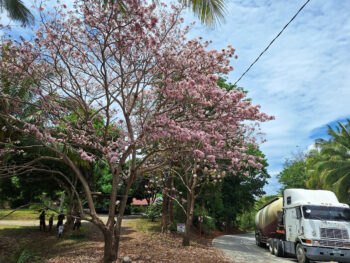GENERAL SANTOS CITY (MindaNews/20 July) – As an initial step to arrest declining tuna catches, the Bureau of Fisheries and Aquatic Resources (BFAR) has urged Filipino fishing companies to agree to a 165,000-metric ton (MT) annual catch ceiling and eventually the reduction of fish catching vessels across the country.
The figure represents the 2011 tuna landings throughout the country by Filipino fishing vessels operating in Philippine waters and did not include imported frozen tunas from Papua New Guinea and Indonesia.
At the General Santos City Fish Port Complex alone, data revealed that total fish landing in the city last year was at 112,890.82 MT, majority of them tuna or tuna-like species. It included the combined 85.94 MT of frozen tuna imported from abroad and those shipped from Manila for the city’s six canning factories.
This city has been acknowledged as the country’s “Tuna Capital,” which has been generating an average of at least US$250 million in revenues from the tuna industry over the last five years.
Benjamin Tabios, BFAR assistant director, backed a General Santos City tuna fishing magnate that majority of the 162 purse seine tuna catchers will have to be decommissioned to keep the industry afloat.
“(The assessment) is fairly correct that there must be a reduction of fishing fleet but there should also be proportionate reduction in gross catch,” Tabios said in a forum organized by Greenpeace on Thursday here.
Tabios was referring to an earlier statement by former Socsksargen Federation of Fishing and Allied Industries president Marfenio Tan, who believes reducing the purse seine tuna catching vessels from General Santos from 162 to 50 will help sustain the industry.
The tuna industry has been reeling from declining catch and increasing production costs over the last three years.
Tabios likewise said the tuna food chain must also be managed in order for the tuna stocks to replenish. He said they were encouraged by the three-month ban on sardine fishing early this year as tuna catches from municipal waters also improved during the period of the ban.
Sardines (tamban or white sardinella) are the natural prey of skipjacks and tuna.
BFAR, he said, is proposing a 30 percent catch reduction in 9 of 12 traditional fishing grounds in the country.
But Tabios also added there are still frontier areas for the country’s tuna fishing, citing the vast Pacific Ocean side of the Philippines that has remained largely untapped.
BFAR is pushing for three major steps to manage the country’s depleting tuna catches namely the reduction of fishing vessels, reducing the number of fishing days, and adopting a closure season specially in known tuna spawning areas. (Edwin G. Espejo/MindaNews contributor)






